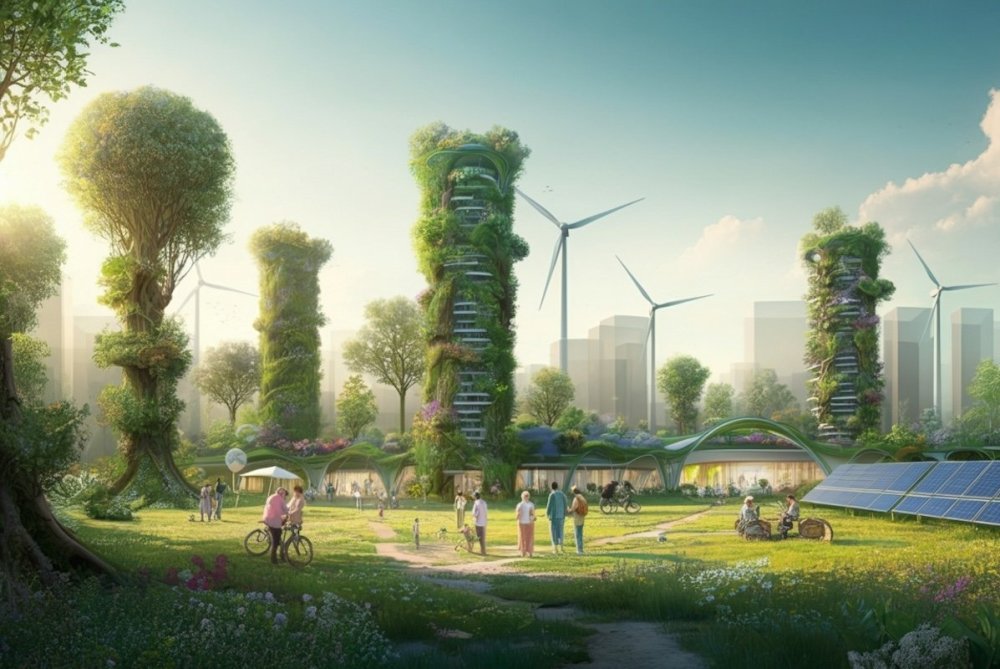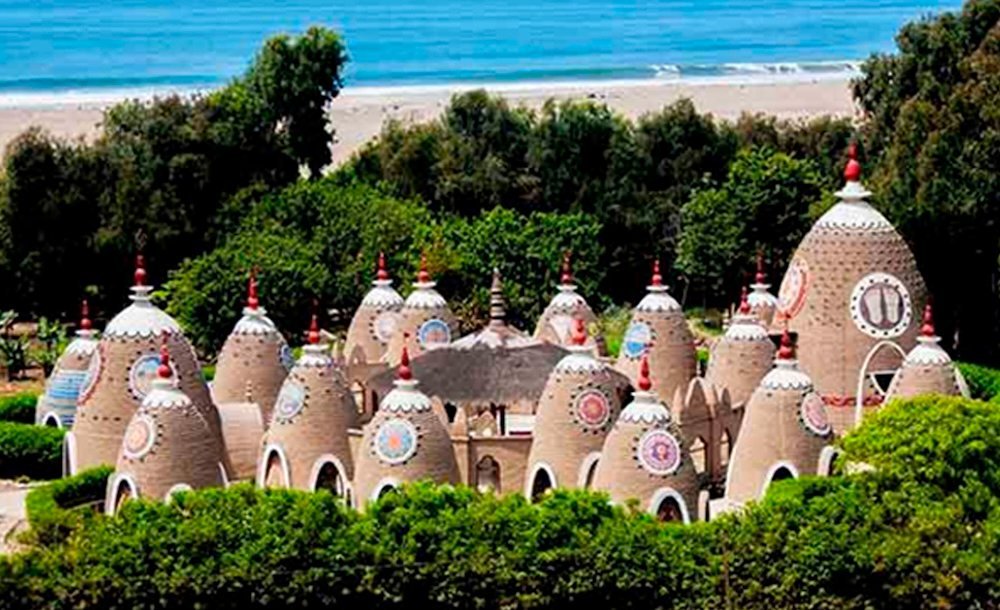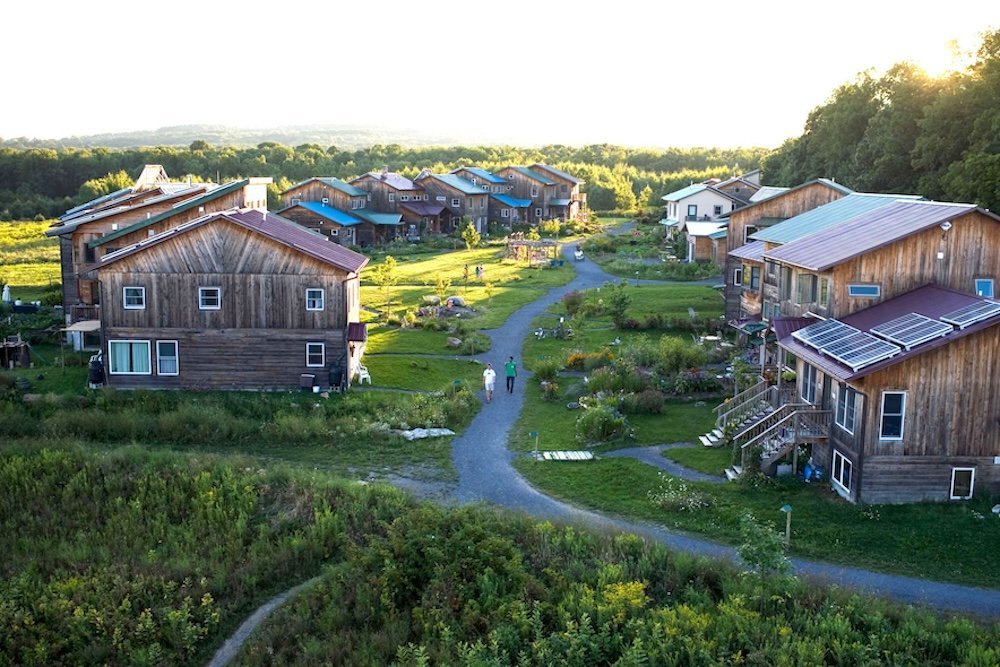Sonia Vadlamani examines the concept of ecovillages as self-sustaining communities and how they aim to provide practical solutions for the critical environmental, economic, and social problems of our time. Discover the benefits and challenges to ecovillage living.
In a world that’s rapidly changing and constantly buzzing with the demands of consumerism and mass production, ecovillages represent a conscious stand against this overexploitation of resources – a scenario also referred to as the “tragedy of the commons.”
Ecovillages seek to counteract the adverse effects of our evidently flawed way of modern living, with perils like air pollution, plastic-choked environments, and alarming levels of food wastage.
What is an ecovillage exactly?
Although there is no concrete definition for an ecovillage, the Global Evovillage Network (GEN) describes it as a "community, either traditional or intentional, which aims at becoming more socially, culturally, economically, and ecologically sustainable."
“Ecovillages seek to counteract the adverse effects of our evidently flawed way of modern living, with perils like air pollution, plastic, and food wastage.”
In essence, ecovillages aim to minimize environmental harm and combat social issues we face at large today while inspiring others through their model and partnerships. Rather than being fixed or self-contained structures, ecovillages are designed to evolve constantly, sharing their models and encouraging cooperation to bring greater change.

A possible ecovillage community of the future?
Ecovillages: communities and care
While the local participatory processes may differ from one ecovillage to another, each is built with resilience in mind and strives to create a positive impact on its surrounding natural and social environment. At the core of each ecovillage lies sustainability, stated as “the precise intersection of environment, economy, society, and culture.”
The framework of ecovillages is generally supported by four pillars of sustainability:
1. Ecological sustainability
The environment is impacted by all human activities, and thus maintaining ecological balance is central to an ecovillage’s model. Some of the essential practices include:
- Organic farming for food production
- Harnessing renewable energy sources
- Protecting and replenishing water resources
- Use of innovative and nature-friendly construction materials
- Waste reduction and reuse
-
Safeguarding ecosystems and biodiversity
2. Economic sustainability
Ecovillages strive to build local economies to meet people’s requirements while remaining resistant to global monetary systems and economic fluctuations. Here are some of the key components of economic sustainability for ecovillages:
- Ensuring fair ownership of land and resources
- Collaborative wealth creation
- Encouraging social entrepreneurship
-
Ethical production and trade practices
3. Social sustainability
Building strong social foundations and forging collaborations is vital for ensuring the longevity of an ecovillage. Ecovillages promote social sustainability through:
- Shared community vision that respects diversity
- Participation-based leadership and shared authority
- Equal access to education and healthcare
-
Provisions for constructive conflict resolution
4. Cultural sustainability
Respecting and supporting the diverse cultural identities of residents fosters a sense of belonging and connectedness. Cultural sustainability is upheld by:
- Supporting personal growth
- Respecting traditions and cultural beliefs
- Utilizing art to celebrate diversity
- Culture as a medium for reconnecting with nature
Benefits of ecovillages
While the local participatory processes may differ from one ecovillage to another, each is built with resilience in mind and strives to create a positive impact on its surrounding natural and social environment
1. Lower energy consumption
A study of two Swedish ecovillages found that their ecological construction methods, if adopted by municipalities around the world, could significantly lower carbon emissions and promote urban sustainability.
2. Responsible economy
Economic sustainability forms the framework for most ecovillages in the form of renewable technology, organic farming, and climate-responsive architecture, helping combat climate change.
3. Inspiration for national well-being strategies
Ecovillager and active GEN member Robert Hall proposes using the ecovillage community model as the blueprint for economic and national development policies that prioritize the well-being and happiness of individuals over economic growth.
4. Value-based education
Ecovillage models promote positive values like empathy, tolerance, diversity, mutual respect, and collaboration to drive positive change, which can pave the way for inclusive, sustainable living.
Challenges of ecovillages
Despite their inspiring and well-meaning objectives, ecovillages often encounter several hurdles in achieving sustainability and broader impact.Limited resources. Access to land, resources, and ongoing funding for the ecovillage on an ongoing basis remains one of the biggest challenges faced by several communities.
Secondly, the scope for economic impact. The presence of economic opportunities in the area – without over dependence on natural resources – to sustain the members of the community is a recurring challenge for several ecovillages.
MORE LIKE THIS:
- The Importance of Community: 7 Key Benefits
- 4 Science-Backed Benefits of Living By The Sea
- Finding Your Tribe: the 7 Steps You Need To Take
Thirdly, governance issues is one of the most universal challenges. Ecovillage communities often face difficulty in setting fair and non-exploiting governance protocols for decision-making and conflict resolution. Similarly, a lack of a shared vision can also become problematic over time. Discovering, developing, and evolving a unified vision acts as the “glue” for such communities, and maintaining this cohesion can get difficult over time.
Ecovillages around the world
Far from being a passing fad, ecovillages are pioneering communities that strive to offer sustainable solutions for the pressing ecological and social challenges we collectively face today. The 2022 annual report by GEN outlined a detailed mapping of 1,043 eco-villages spread around the world.
Here’s a look at how some of these ecovillage communities are making a positive difference:
Findhorn Ecovillage, Scotland
Initially set up in 1985 at Moray, Scotland, Findhorn Ecovillage is the largest intentional community in the UK. Based on the principles of low-carbon and sustainable living, this ecovillage emphasizes how social, ecological, and economic aspects of life are interconnected.
Known as the “living laboratory,” Findhorn incorporates innovative features like “breathing walls” for natural insulation, efficient solar heating systems, and community-owned wind turbines that generate more than the entire electricity needed by the community.

Community planting at Findhorn Ecovillage, Scotland
According to an expert study, Findhorn’s ecological footprint is 50% less than the UK average, which means that the residents consume half the resources and generate just half the waste of an average UK citizen. Their “20-minute neighborhood” feature, where everything residents need – like groceries, workspaces, and schools – is within a 20-minute walk, significantly reduces their dependency on cars, therefore curbing their carbon footprint.
Eco Truly Park, Peru
Located an hour north of Lima on the seaside in the Aucallama district, Eco Truly Park houses an artistic, spiritual, and self-sustaining community. It features 18 striking conical structures called ‘trulys’ made of clay and natural materials, offering a distinctive, earthy aesthetic. Inspired by Vaishnava principles and rooted in traditional Indian teachings, this ecovillage attracts visitors who seek a deeper connection with nature and themselves.
Volunteers and visitors can participate in immersive experiences like yoga retreats, art classes, and organic farming to encourage mindful and natural living.
“While the local participatory processes may differ from one ecovillage to another, each is built with resilience in mind and strives to create a positive impact on its surrounding natural and social environment.”
One can also engage in local ecological programs focused on sustainability and self-sufficiency, while also learning values like non-violence, compassion, and tolerance. Ultimately, the Eco Truly Park community aspires to create a replicable model for sustainable living – a solution to address the extreme poverty impacting over 14 million Peruvian citizens.

The clay living huts at Eco Truly Park, Peru
EcoVillage Ithaca, New York, United States
One of the largest sustainable communities, Ecovillage Ithaca, was founded in 1991 with the aim to create effective solutions for various ecological and economic crises the world faces today. Home to around 230 individuals, the community’s mission is to “promote experiential learning about ways of meeting human needs for shelter, food, energy, livelihood, and social connectedness.” Indeed, thanks to their sustainable practices, the residents of the ecovillage have nearly a 70% lower ecological footprint than the average American.

Innovative housing at EcoVillage Ithaca in New York
The village consists of three neighbourhoods – Frog, Song, and Tree – with homes constructed using innovative green building techniques like passive solar design, triple-glazed windows for insulation, and photovoltaic solar panels that generate nearly half of the community’s electricity needs. Through their “Thrive” program, resident experts also offer learning opportunities for students, designers, and sustainability enthusiasts, centred on green construction techniques and organic farming practices.
Takeaway: ecovillages
Amid the chaos and noise of urban living, learning about ecovillages gives us a hopeful blueprint toward a sustainable, regenerative future. By integrating all four aspects of sustainability – ecological, economic, cultural, and social – these communities demonstrate how we can reshape our lifestyles to live in harmony with nature and preserve Earth’s ecological balance for future generations. •
Images: shutterstockAI, Findhorn Ecovillage, EcoVillage Ithaca
happiness.com | The fine art of being: learn, practise, share
Are you a happiness.com member yet? Sign up for free now to enjoy:
■ our happiness magazine with practical life tips
■ share and support in our happiness forum
Written by Sonia Vadlamani
 Fitness and healthy food blogger, food photographer and stylist, travel-addict and future-self journaler. Sonia loves to write and has resolved to dedicate her life to revealing how easy and important it is to be happier, stronger and fitter each day. Follow her daily pursuits at FitFoodieDiary or on Instagram.
Fitness and healthy food blogger, food photographer and stylist, travel-addict and future-self journaler. Sonia loves to write and has resolved to dedicate her life to revealing how easy and important it is to be happier, stronger and fitter each day. Follow her daily pursuits at FitFoodieDiary or on Instagram.


Join the conversation
You are posting as a guest. If you have an account, sign in now to post with your account.
There are no comments to display.